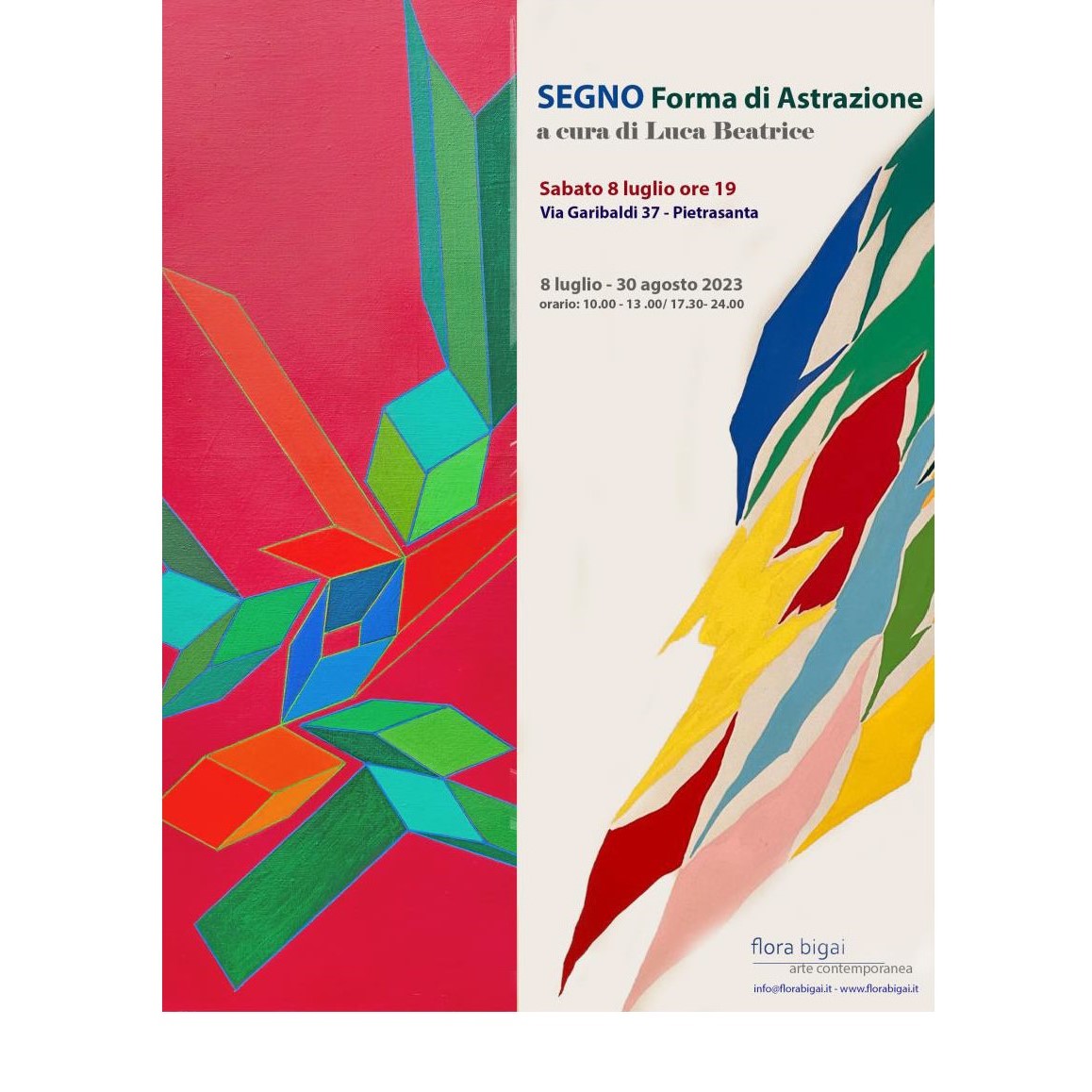SEGNO Forma di Astrazione
2023 07 08 2023 08 30

A review of Italian abstract painting in its best years and also a re-enactment, thus 'Sign, a form of abstraction'.
The post-war period was the scene of a heated debate, sometimes bitter, between the painters who expressed themselves with figuration, considering it indispensable for a didactic and immediate art, which had treasured realism and the relationship with politics expressed by Picasso of Guernica starting from 1937. If this seemed to be the dominant line for a long time, it was precisely from 1946 that the new abstract generation appeared in the world of Italian art, which wanted to dialogue with European (Informal) and American expressions (the new born Expressionism Abstract). In 1947 the Forma 1 group was founded from the name of the magazine, released in a single issue in March, and among its members there were Carla Accardi (1924-2014), Piero Dorazio (1927-2005) and Achille Perilli (1927-2021). They proclaimed themselves "formalists and Marxists, convinced that the terms Marxism and formalism are not irreconcilable".
For decades Dorazio and Perilli were among the best interpreters of Italian and at times international abstraction, while Accardi, in addition to being one of the first female artists unanimously recognized by critics, a militant feminist, represents almost a link between abstract painting and the neo-avant-gardes of the 60s, especially Arte Povera. This epochal passage, which is identified in the overcoming of painting, involves the Turinese Giorgio Griffa (1936) whose coherent and rigorous aesthetics intersects with the analytical painting movement and, above all, presents itself as a conceptual, scientific and mathematical reflection. Today Griffa is considered, internationally, one of the most important artists of his generation.
Testimonies of abstract research, albeit with other theoretical presuppositions, also interest the most recent generations. Sergio Fermariello (1961) began working in the 1990s (in 1991 he took part in Metropolis at the Martin Gropius Bau in Berlin, in 1993 a personal room at the Venice Biennale) and his language cannot be analyzed without the epochal passage of the Transavantgarde, which in the 80s returned centrality to figurative painting. Among today's expressions, Paolo Bini (1984) stands out, winner of the Cairo Prize in 2016 and protagonist of an important personal exhibition at the Royal Palace of Caserta in 2017. His works, composed in an almost sculptural process, are created through the addition of sections of paper ribbons to which various brushstrokes are superimposed which, gesture after gesture, are thickened, enlarged, alternated or juxtaposed.
WordReference.com
WordReference.com
Reverso
Reverso
DeepL
DeepL